"Mosquitoes" of the Royal Air Force
Amazing this plane was for several reasons. First, its body was completely made of wood. The British themselves considered the wooden structure archaic, initially even rejecting the very idea of building this aircraft. However, at the end of 1939, under wartime conditions, they returned to this project again. Creating an all-wood plane in the face of a shortage of aircraft-grade aluminum was a justified decision, and it also allowed the wood-processing enterprises to load their capacities. The second feature of this aircraft in the version of the bomber was the complete absence of defensive rifle weapons, typical of all bombers of that period. The only defense of the aircraft was to become its speed, which for those years was very high.
The twin-engine, high-profile De Havilland DH.98 Mosquito had two engines with boost compressors, specially designed to work at high altitudes (the ceiling reached 11 000 meters). The crew consisted of two people. In the construction of a multipurpose bomber, a thick three-layer lining with outer plywood layers and inner balsa with spruce inserts for strength was used, on top of it was pasted over with a canvas. This design allowed to achieve the required values of strength with a small weight of the structure. Moreover, German radars did not “see” the plane badly, noticing the “Moskito” only at a short distance, since the bomber had only metal engines and some controls.
This "mosquito" was used by the British for "point" bombing, as well as a target designator for night bombardment of German cities. Despite the complete absence of defensive small arms and cannon weapons, the losses among the "Moskito" were among the lowest among all aircraft that participated in the Second World War. Mosquito, which belonged to the Bomber Command, during the war years made almost 40 thousands of sorties, while losing the entire 254 aircraft. Thus, the level of losses was - 0,63%. It was much lower than that of any other type of bombers that were in service with the Royal Air Force.
Such low losses were explained by the excellent flight performance of the aircraft: the high speed and flight altitude made the "mosquito" less vulnerable to German anti-aircraft artillery fire and fighters. The maximum flight speed of the aircraft was about 640-675 km / h, and the practical ceiling is about 11 kilometers. With such high-speed characteristics, the aircraft was almost invulnerable to the attacks of German fighters Messerschmitt Bf.109G-6. Only the first German fighter jet, the Messerschmitt Me.262, could effectively fight this multipurpose bomber.
Due to its characteristics, the aircraft gained respect both among the British and their allies, and among the enemy. But the military always want to get something more perfect and invulnerable, and the designers are always ready to offer it to them - at first only in the form of drawings on paper, and then possibly, embodied in metal, although in this case it is more appropriate to say in wood. So the creators of the aircraft "Moskito" created several projects for the development of their offspring - DH.99 / DH.101, DH.102, "Jet Mosquito", which were never implemented, but this did not become less interesting.
DH.99 / DH.101
In November 1941, the Ministry aviation Great Britain released specification B.11 / 41, which was actually a description of a rather interesting project Hawker P.1005. By its ideology, this project was close to the Mosquito multipurpose bomber, it was supposed to be its replacement. It was about creating the same unarmed high-speed bomber, but notable for its larger size and powerful engines. It was planned to install two Napier Saber engines on the plane. In this case, the bomb load and the speed of the bomber should have increased. After the upgrade, the aircraft could be used as a long-range fighter.
Naturally, De Havilland did not even think of giving its rivals the niche of a high-speed bomber, which was so hard won by the Mosquito, which first had to overcome the resistance of skeptics. Therefore, in October 1941, the company began to implement the project under the designation DH.99. Unofficially, this aircraft received the nickname "Super Mosquito" or "Charged Mossie" (Hotted-up Mossie). In December of the same year, the project received a new DH.101 index, and the old DH.99 index was handed over to the unrealized project of a twin-engine light civil aircraft.
In addition to the companies De Havilland and Hawker, Miles took part in the competition to create a new high-speed bomber, promoting the rather unconventional project M.39, which could be called the strangest experimental bomber of those years. It was about a car with a tandem arrangement of the wings. Like the aircraft, designed by Hawker engineers, the DH.101 was planned to be equipped with two Saber engines. Externally, the "Super Moskito" grew by about 1,5 times compared with its predecessor. He had to surpass the usual "Mosquito" in everything: to carry more bombs at a greater distance with greater speed and at greater height. In many ways, the improvement of performance designers planned to achieve through the use of new powerful H-shaped 24-cylinder engines Napier "Saber".
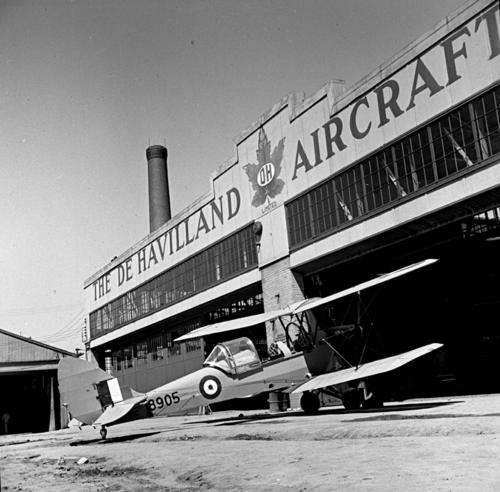
The crew of the bomber was supposed to grow from two to three people. The flight speed with Saber engines of the first modifications was to reach 671 km / h at an altitude of 7925 meters, and with a more advanced version of these engines with an 2180 horsepower capacity of hp, the speed should increase to 692 km / h. In the bomb bay inside the fuselage of the bomber, 4000 pounds (1814 kg) of bombs were placed, another 2000 pounds (907 kg) of the aircraft could be carried on the wing assemblies. The aircraft was supposed to carry its deadly cargo for a distance of approximately 1500 miles (2400 km), and with additional fuel tanks to 1700 miles (2700 km). The estimated speed of the DH.101 aircraft with a maximum bomb load should be 650 km / h, and the ceiling - 8300 meters. With more sophisticated Saber engines, the plane could climb to an altitude of 10 700 meters. The wing span of the projected aircraft was 21,3 meters, the wing area - 66 square meters. For comparison, the wingspan of the usual "Mosquito" was 16,51 meters, and the area of the wing - 42,18 square meters.
According to the developed specification B.11 / 41, a new high-speed bomber after a small upgrade could turn into a heavy fighter. In this version, the aircraft was equipped with very powerful weapons, represented by four Hispano 20-mm cannons or the same number of 40-mm cannons. Initially, the new bomber was taken very favorably. Experts noted the continuity of the wooden structure (as in the Mosquito bomber), the absence of complex and reducing the speed characteristics of the machine defensive installations, the use of more powerful engines.
Despite the excellent set of tactical and technical characteristics that exceeded the performance characteristics of the competitor Hawker P.1005, the aircraft was never built. 4 on April 1942 was announced to De Havilland about the impossibility of equipping the new aircraft with Saber engines. The company Napier at that time simply could not cope with the mass production of its aviation supermotor. The motor was raw, very unreliable, and the production base of Napier did not allow the serial production of these engines, which would be sufficient for the implementation of the DH.101 project and all its competitors. It was suggested that the aircraft was equipped with other engines - a star-shaped Bristol Centaurus or a Rolls-Royce Griffon liquid-cooled engine, but the company refused this idea, reasoning that the DH.101 characteristics would inevitably be worse with other engines, therefore the project was minimized.
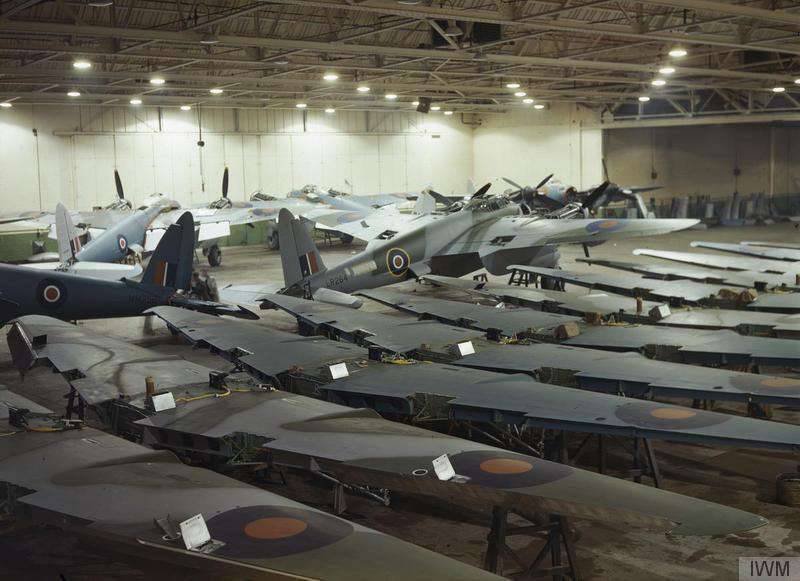
DH.102
Refusing to install a new engine on the DH.101 bomber and withdrawing from the competition on the B.11 / 41 specification, De Havilland initiated a new, no less ambitious project - DH.102. This development received the code name Mosquito “Mosquito”, it was developed as a replacement for the speed bomber DH.98 “Moskito”. In general, the new aircraft was supposed to repeat its ancestor. However, it was planned to equip the car with two Rolls-Royce Merlin 61 engines with a two-speed supercharger (at the first stage, Rolls-Royce Griffon engines were considered). In this case, the bomber was to become a triple, and its cockpit - airtight. His bomb load was also increasing - up to 5000 pounds (2268 kg). But the estimated speed of the aircraft was less. DH.102 was supposed to exceed DH.98 in size, but was smaller than DH.101.
The Ministry of Aviation ordered two prototypes of the new aircraft, which received the serial numbers MP478 and MP481, and began building them.
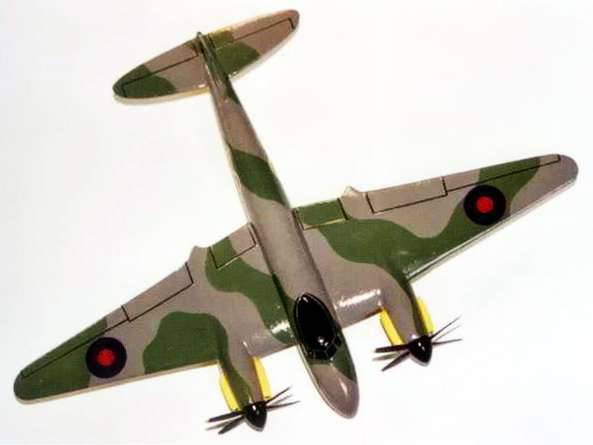
However, at De Havilland itself, this project eventually began to be treated without due enthusiasm, preferring other developments. Priority for the autumn 1942 of the year was given to the DH.100 jet fighter (the famous “Vampire” in the future), as well as to the twin-engine DH.103 fighter “Hornet”, also equipped with two Merlin 61 engines. At the same time, the installation of this engine on the already produced conventional "Moskito" allowed freeing up the strength of the company's engineers for the implementation of more promising projects. And the customer, represented by the military, agreed with the arguments of De Havilland and 26 in December 1942 of the year canceled the issued order for DH.102 aircraft
Reactive "Mosquito"
Already in January, 1942 began the review of the project of the jet Mosquito, which was planned to be equipped with two Halford H.1 TRDs. In the UK, it was the second jet engine. It was created by Frank Halford from April 1941. At the same time, in 1943, De Havilland bought his company, and the engine later became known as De Havilland Goblin. The Moskito version of the jet bomber did not receive the company's internal index. He was simply denoted - Aircraft A (Airplane "A"). A variant of this jet, dated June 1942, was distinguished by the following characteristics: maximum speed - 716 km / h at 12 200 meters altitude, bomb load - 2000 pounds (907 kg). The wingspan of the aircraft was supposed to be 19,81 meters, length - 15,09 meters. Both parameters were less than those of the DH.101 project, but more than those of the serially produced Mosquito, but the bomb load was completely identical.
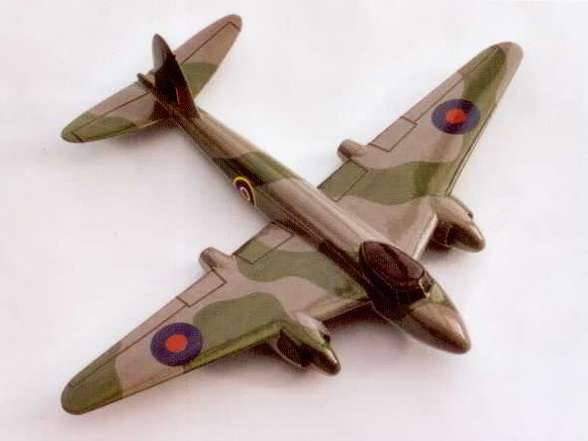
The company believed that the new turbofan engines would be significantly simpler in design than the Napier Saber piston engines, but they could not completely abandon and forget about them by developing the Aircraft B variant. An interesting feature of the piston machine was the use of coaxial propellers. Work on these two projects was stopped at the stage of another pre-sketch design. Unfortunately, for all the above projects, very few graphic materials have survived to this day.
DH.103 Hornet
It should be noted that during the Second World War there was no further development of the Mosquito bomber concept, but the original Komar, thanks to the improvement work, advanced significantly towards the 1945 year, remaining still elusive for its opponents. At the same time, the Moskito fighter branch was further developed as an excellent, very high-speed twin-engine DH.103 Hornet fighter, which was mass-produced.
The outline design of this long-range escort fighter began as early as September 1942. The layout of the aircraft was shown after 5 months. He absorbed all the best from his predecessor and aroused genuine interest in the Ministry of Aviation Industry of Great Britain. In June 1943, the serial production of the DH 103 fighter was officially recognized as a priority. The first DH 103, which got its own name Hornet (Hornet), was released on 20 on July 1944 of the year. The car made its first flight July 28 of the same year. By the time Japan surrendered, it was possible to manufacture all 60 of such aircraft in the Mk.1 modification. The fighters began to flow from the factory to the airfield at Heartfield from the end of 1944. The first of these cars were flown in February 1945 of the year. The lead aircraft of the series was sent to the flight research center, where he passed state tests. During the test, the aircraft was able to reach the speed of 760 km / h at an altitude of 6700 km, an excellent indicator for a piston fighter.
This long-range escort fighter was late for his war and practically did not participate in hostilities after World War II, but managed to distinguish himself in another. In September, 1949, the two Hornet serials, performed a record non-stop flight to Gibraltar in honor of the next anniversary of the air battle for Britain. Lieutenant Peebles’s aircraft, which started from the Bovington airfield, covered the entire distance at an average speed of 575 km / h, and after his return to 19 on September, Captain Carver repeated the route at an even greater cruising speed - 701 km / h.
Information sources:
http://warspot.ru/2852-selektsiya-britanskih-komarov
http://www.aviarmor.net/aww2/aircraft/gb/dh98_mosquito.htm
http://www.airaces.ru/plane/voennye-samoljoty-velikobritanii/de-khehvillend-dh-98-moskito.html
http://www.airwar.ru/enc/fighter/dh103.html
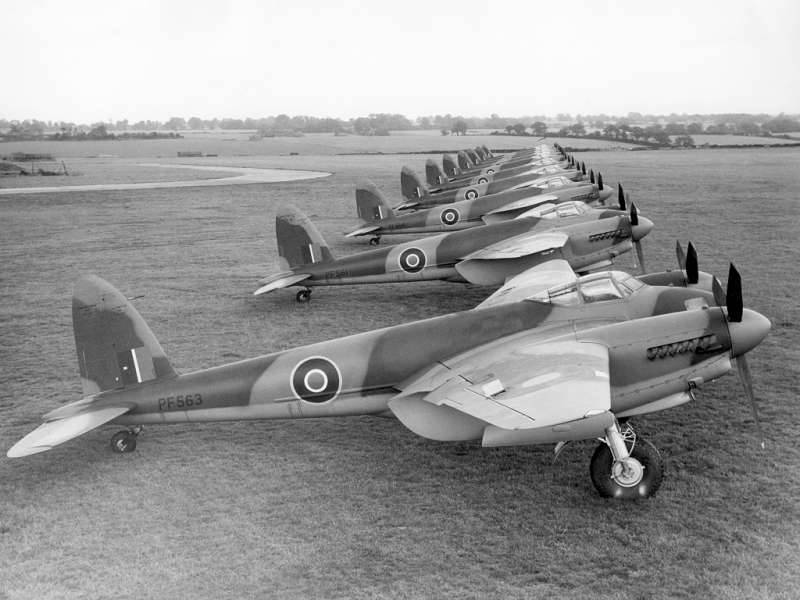
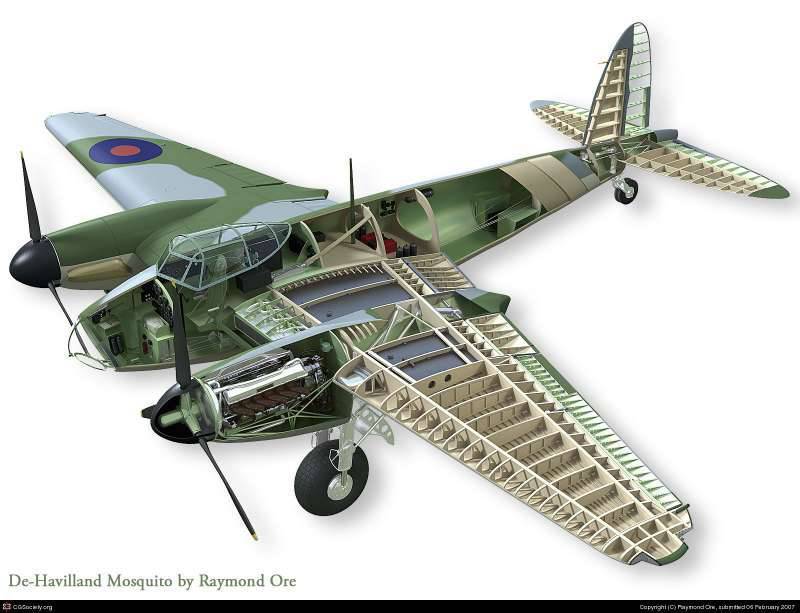
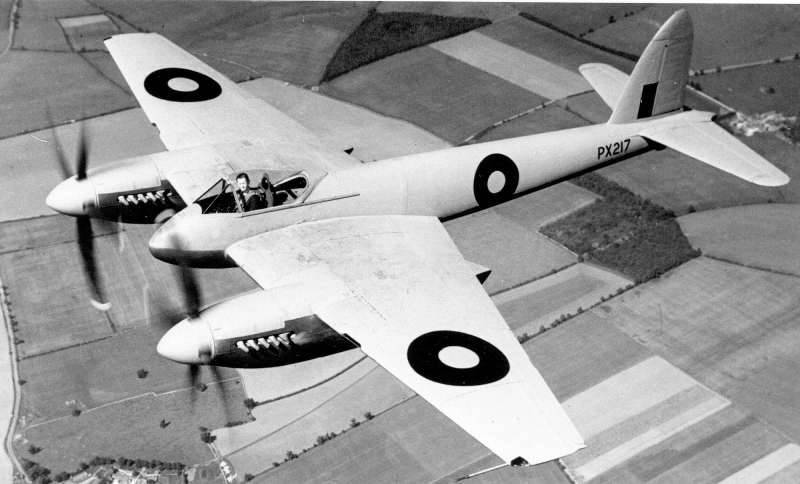
Information